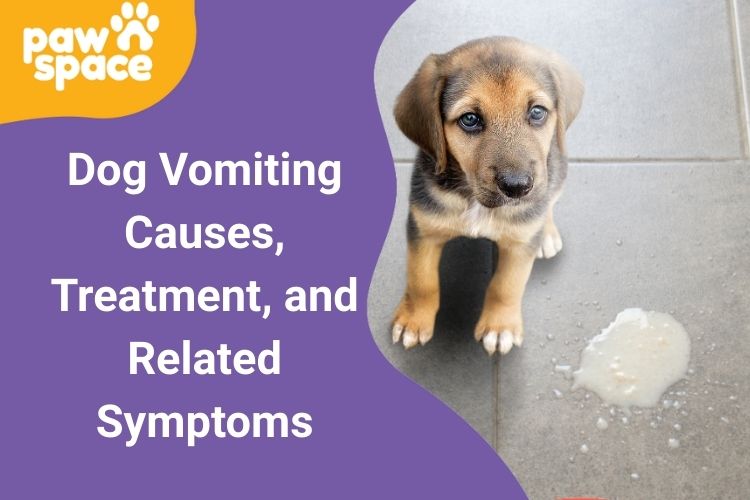Tail chasing in dogs is a common and often amusing behavior—if you’ve ever caught your pup spinning in circles, chasing their tail like it’s the most exciting game in the world, you’re not alone. Count us in!
Tail-chasing is one of those peculiar dog behaviors that will have us giggling, scratching our heads, or sometimes even worrying about what’s going on. So, what’s actually happening when your pet has decided their tail is the best toy ever?
In this blog, let’s discuss six of the usual reasons why your dog ends up chasing his own tail by Pawspace
Table of Contents
Toggle- Tail chasing in dogs is a common behavior that can have various causes:
- 1. Playfulness and Curiosity
- 2. Boredom or Lack of Stimulation
- 3. Attention-Seeking Behaviour
- 4. Medical or Physical Issues
- 5. Anxiety or Stress
- 6. Compulsive Behaviour or OCD
- When Should You Be Concerned?
- A Spin on Canine Behaviour
- Pawspace: The safe space for your pets
- Why Choose Pawspace?
- FAQs
- 1. Why do puppies chase their tails?
- 2. Can tail-chasing be a sign of boredom?
- 3. Is tail-chasing ever a cause for concern?
- 4. Can parasites cause tail-chasing?
- 5. How can I stop my dog from compulsive tail-chasing?
Tail chasing in dogs is a common behavior that can have various causes:
1. Playfulness and Curiosity
For most dogs, particularly puppies, tail-chasing is just play. Puppies are learning about their bodies and the world, and their tail is a fascinating, moving object. It’s a built-in toy that they simply can’t resist chasing!
Even older dogs can, at times, chase their tails for the excitement or because they are bored. If the dog is cheerful and happy when whirling around in circles, it’s probably just a happy moment. But if it’s too frequent, then maybe it’s time to think of other reasons.
2. Boredom or Lack of Stimulation
Dogs are intelligent and energetic creatures that need plenty of mental and physical stimulation. If they don’t get enough exercise or stimulation, they will take up activities such as tail-chasing as something to entertain themselves with. It is like pacing up and down for them when they are bored.
To avoid tail-chasing caused by boredom, engage your dog with regular playtime, walks, and interactive toys. Mental stimulation in the form of puzzle feeders or training can also keep them occupied.
3. Attention-Seeking Behaviour
Dogs are highly perceptive and quickly learn what brings a reaction from their human. Laughter, clapping, and even scolding your dog when he’s running around in circles will make him think it’s a means of getting attention. Attention, good or bad, is preferable to nothing to some dogs.
If you suspect that your dog is tail-chasing in an effort to elicit your attention, attempt to correct the behaviour by directing them away with a toy or by verbal means. Praise them when they do a better thing, and do not strengthen the tail-chasing by offering dramatic reactions.
4. Medical or Physical Issues
Tail-chasing in other cases is a sign of an illness issue. Your dog will bite or chase their tail when they’re in pain, itching, or discomfort. Suspects are:
Fleas or Parasites:
Flea bites or parasites in the internal system make the skin around the tail itch.
Allergies:
Skin allergies, like itching and irritation, will make your dog obsess over their tail.
Injuries:
A sprain, cut, or other injury in the area of the tail may lead your dog to chase or chew at it.
If your dog is excessively tail-chasing on a regular basis, and if this is accompanied by such symptoms as redness, swelling, or hair loss, it’s time to make an appointment with your vet. They will be able to determine whether there’s a medical cause for the problem and prescribe what is needed.
5. Anxiety or Stress
As with humans, dogs can also acquire coping strategies for stress or anxiety. Tail-chasing may be a repetitive, compulsive action that serves to soothe them in times of stress. This is usually observed in separation anxiety or those who have experienced abrupt changes in their environment.
If you are sure that anxiety is the cause of the issue, then the following are steps to take:
Establish a routine that is calm and predictable for your dog.
Give them a space where they can escape when they feel they are overloaded.
Seek a veterinarian or a behaviourist to help manage anxiety, either through training exercises or calming aids.
6. Compulsive Behaviour or OCD
In some instances, tail-chasing could be an obsession, much like obsessive-compulsive disorder (OCD) functions in human beings. It could be overly performed by some dogs with OCD such that it disturbs routine life or causes physical harm.
Compulsive tail-chasing is usually caused by genetics, stress, or an insufficient amount of stimulation. Certain breeds like Bull Terriers and German Shepherds have a tendency to develop compulsions.
If you notice that your dog is excessively tail-chasing, professional attention is essential. A veterinarian or animal behaviourist will be able to analyse the situation and provide suggestions on how to eliminate or minimise the behaviour.
When Should You Be Concerned?
While the infrequent tail-chasing is normally harmless and even charming, it’s wise to observe the frequency and severity of the activity. If your dog’s tail-chasing is chronic, results in self-mutilation, or is part of a cluster of abnormal behaviours, it’s time to investigate further.
A Spin on Canine Behaviour
Tail-chasing is one of those adorable but mystifying activities that remind us just how complex and idiosyncratic our canine friends are. Whatever it is – a frivolous spin, a bid for attention scream, or something else – knowing why your dog is engaging in it can assist you in responding appropriately to their needs.
So the next time your dog begins to whirl about his tail, sit back and watch with amusement—but also keep your eye out for any tells that will need closer inspection. There’s a tale in every spin, and it’s our job to listen up.
Pawspace: The safe space for your pets
We at Pawspace are dedicated to providing top-notch care and companionship for your
beloved pets. Honoured to be India’s biggest pet-centred community! Created and curated by pet parents.
Our services include pet grooming, pet boarding, pet sitting, doorstep dog training, dog walking, pet taxi/cab, pet relocation, pet funeral, cat grooming, etc.
Why Choose Pawspace?
- Available on demand for pet parents everywhere
- Verified caregivers with a 5-point checklist & rigorous background checks
- Be at peace by receiving regular updates through chats, photos and videos
FAQs
1. Why do puppies chase their tails?
Puppies tend to chase their tails due to play and curiosity. They are still discovering their bodies and are intrigued by their tails.
2. Can tail-chasing be a sign of boredom?
Yes, dogs can chase their tails when they are not mentally or physically stimulated. It might be a method of self-entertainment.
3. Is tail-chasing ever a cause for concern?
If the behaviour is excessive or results in self-injury, it may be a sign of an underlying problem like anxiety, a medical condition, or OCD.
4. Can parasites cause tail-chasing?
Yes, fleas or worms can cause itching or discomfort in the area around the tail, leading a dog to chase or bite their tail.
5. How can I stop my dog from compulsive tail-chasing?
See that your dog has sufficient exercise, mental stimulation, and regular vet check-ups. Deal with stress or anxiety through training or professional assistance as necessary.

















